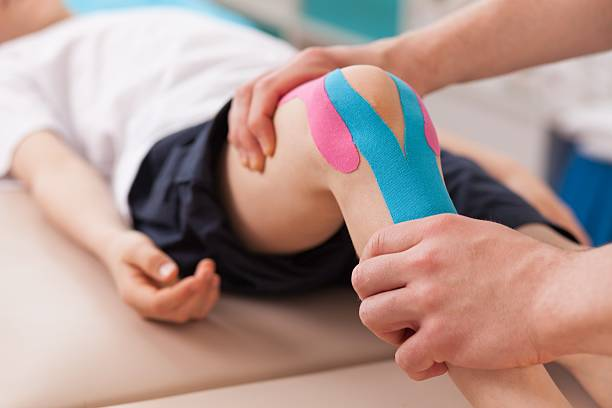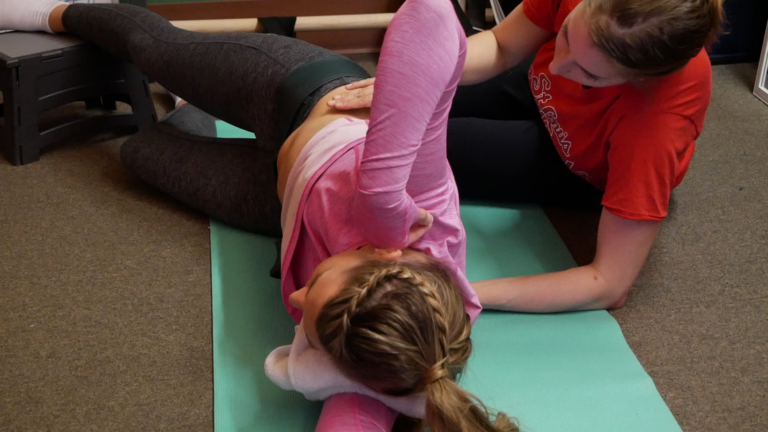
Physical therapy is a branch of medical service that concentrates on recovering mobility, enhancing performance, and relieving pain with particular remedial measures. Involving itself in different specializations that deal with various health issues such as orthopedic injuries or neurological disorders, it works closely with patients to come up with personal treatment programs designed especially for each one’s needs, thereby ensuring that they get maximum attention depending on their condition. This individualized strategy lays the foundation for attaining the best results in health care.
What are the four main types of physical therapy?
The four main types of physical therapy are orthopedic, neurological, pediatric, and geriatric. Orthopedic therapy focuses on musculoskeletal injuries, neurological therapy treats nervous system disorders.
Pediatric therapy helps children with developmental problems. Geriatric therapy deals with age-related conditions. Each of these categories contains numerous techniques directed toward specific patient needs, including manual therapy to assist with pain relief and exercise to enhance balance and prevent falls.
Pediatric therapy may involve play activities to promote participation, and geriatric therapy focuses on independence. These modalities enable the restoration of function, pain management, and enhancement of the quality of life.
How does orthopedic physical therapy help with rehabilitation?
Orthopedic physical therapy aids rehabilitation by focusing on restoring function, mobility, and strength to the musculoskeletal system. Therapists use exercises, manual therapy, and modalities like ultrasound to reduce pain and improve movement, assisting recovery from injuries or surgeries.
Individual treatment plans by the therapists focus on the body’s particular parts injured, hence ensuring a holistic healing process. Some of the techniques constituting joint mobilization and therapeutic exercises aid in strengthening muscles and increasing flexibility for returning the patients safely and efficiently to their pre-injury active state. It also reduces the possibility of re-injury and fosters improved wellness.

What role does neurological physical therapy play in stroke recovery?
Neurological physical therapy plays a crucial role in stroke recovery by helping patients regain motor skills and improve balance and coordination. Therapists use techniques like gait training and neuro-reeducation to enhance neural plasticity and promote independence.
Through repeated and specific exercises, therapists can stimulate the brain’s potential to reorganize itself and create new pathways, which reactivate lost capabilities, thereby restoring independence in daily activities.
Regular therapy enhances the patient’s physical capacities and quality of life by boosting self-confidence and minimizing future possible complications. Individual treatment programs are incorporated to meet the needs and objectives of each patient.
How does pediatric physical therapy support children with developmental delays?
Pediatric physical therapy supports children with developmental delays by enhancing motor skills, balance, and coordination.
The therapists design play and fun activities that will encourage movement and functional development. Most of the therapy involves family education to reinforce activities done at home. This form of therapy is tailored to the child’s strengths and weaknesses.
It may include crawling, jumping, or balancing activities to prompt total physical development. Parent involvement enables carry-over into daily life and can be very effective. Therapy helps a child to achieve developmental milestones by providing him with confidence and socialization.
What benefits does geriatric physical therapy offer to older adults?
Geriatric physical therapy offers benefits to older adults by improving mobility, balance, and strength, reducing the risk of falls. It helps manage chronic conditions like arthritis and osteoporosis through personalized exercise programs.
It improves general well-being and independence and makes one focused. The therapists shift their focus to functional exercises that help in supporting daily activities like walking, climbing stairs, or lifting of objects.
Such therapy targeting the age-related challenges more specifically shall help the individual sustain autonomy and enhance the quality of life. Regular sessions make an individual more physically active, develop good postures, reduce pain, and provide better conditions towards active and healthy living.

What are the main techniques used in physical therapy?
Physical therapy techniques include manual therapy, therapeutic exercises, electrotherapy, and hydrotherapy. Manual therapy involves hands-on manipulation to improve mobility, while exercises target strength and flexibility.
Electrotherapy is electrical stimulation that relieves one from pains, while hydrotherapy makes use of water’s buoyancy and resistance. The techniques to be applied will depend on the needs and conditions of each patient. Manual therapy helps in releasing the restricted joints, and the exercises optimize the working of the muscles.
Electrotherapy reduces inflammation and promotes healing, while hydrotherapy was given to the service of rehabilitation through low-impact resistance exercises, mainly for those people who have mobility problems.
How can physical therapy be tailored to individual patient needs?
Physical therapy can be tailored to individual patient needs through personalized assessments and treatment plans. Therapists evaluate the patient’s condition, goals, and lifestyle to design specific exercises and interventions.
Treatment adjustments will be based on progress toward optimal results. This allows focused intervention to solve the peculiar challenge of every patient, therefore contributing to his effective recovery.
Further monitoring of progress allows therapists to fine-tune techniques to elicit maximum therapeutic benefits. Individual therapy gives rise to better engagement and motivation of the patients; thus, effective rehabilitation with long-term health improvement results.
Adopting Physical Therapy for Better Health
The main types of physical therapy are orthopedic, neurological, cardiopulmonary, and geriatric each designed to treat a certain health problem such as arthritis or heart disease. It is important to choose the right kind of physical therapy and this starts with an initial examination that helps determine what would work best for you. Finding the correct physician will set you off on a path toward better mobility; lessened aches and improved overall quality of living.

